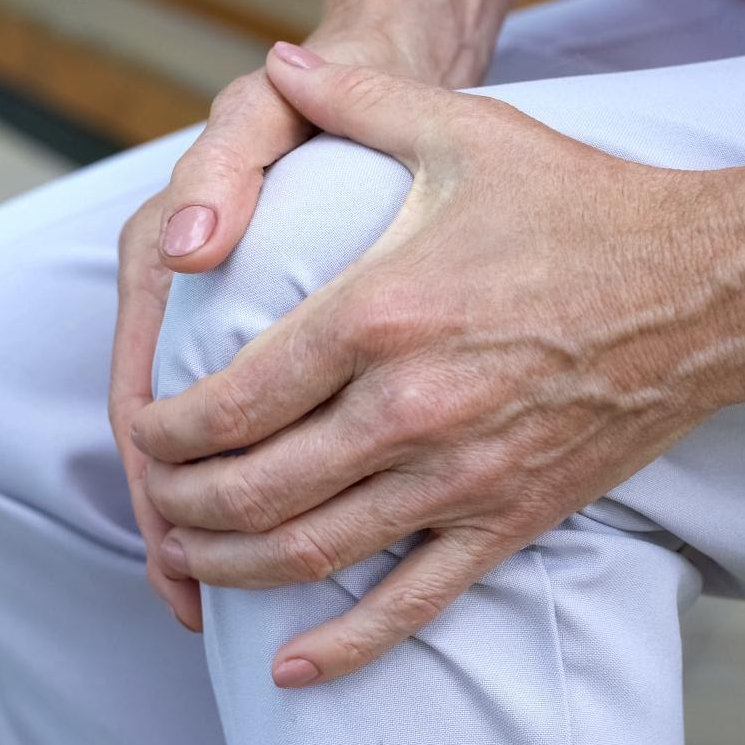Arthritis is the swelling, inflammation, and tenderness of one or more joints resulting from the breakdown of cartilage. Cartilage is a tough and slippery tissue that covers the ends of bones in joints such as wrists, knees, hips, or fingers. The main symptoms of arthritis include joint pain and stiffness, which generally worsen with age. These symptoms may develop gradually over time but can also appear suddenly. Arthritis typically occurs in adults over the age of 65, affecting approximately one in five adults. It is more common in women and overweight individuals. The treatment, which focuses on reducing symptoms and improving quality of life, varies depending on the type of arthritis.
What Causes Arthritis?
Cartilage is a strong yet flexible connective tissue in joints that helps absorb pressure and shock during movement while protecting the joints. A reduction in the natural amount of cartilage can lead to certain types of arthritis. Joint infections or injuries, such as wear and tear, can accelerate the breakdown of cartilage tissue, which is one of the most common causes of arthritis. Factors such as aging, family history, genetics, being overweight, bacterial infections (Read more here), posture, gender, and joint injuries increase the risk of developing arthritis.
What Are the Symptoms of Arthritis?
Pain, stiffness, and swelling in joints are the most common symptoms of arthritis. Individuals may also experience a reduced range of motion and redness around the affected joint. These symptoms are often more noticeable in the morning and can vary in intensity over time, but severe cases may lead to permanent joint damage.
The main types of arthritis, osteoarthritis (arthritis) and rheumatoid arthritis (RA), affect joints differently.
In osteoarthritis, joint cartilage damage causes friction, bone-on-bone grinding, pain, and restricted movement. This wear and tear may develop gradually or result from joint injury or infection. Osteoarthritis leads to changes in bone, joint inflammation, and damage to tissues connecting muscles to bones.
In rheumatoid arthritis (Read more here), the immune system attacks the synovial membrane—a tough layer surrounding the joint—causing inflammation and swelling. Over time, this disease destroys the cartilage and nearby bones.
How Is Arthritis Treated?
The primary goal of arthritis treatment is to reduce pain and prevent further joint damage. While there is no definitive cure for arthritis, methods like medication, physiotherapy, and surgery significantly help in managing symptoms.
1. Medications
Various medications are effective in managing arthritis:
- Pain relievers like hydrocodone (Vicodin) or acetaminophen (Tylenol) help control pain but do not reduce inflammation.
- Nonsteroidal anti-inflammatory drugs (NSAIDs) such as ibuprofen (Advil) and salicylates, like menthol and methyl salicylate, reduce pain and inflammation by providing a cooling and then warming sensation on the skin.
- Menthol or capsaicin creams block pain signals from joints, reducing the sensation of pain.
- Corticosteroids like prednisone or cortisone suppress the immune system and help decrease inflammation.
2. Surgery
Joint replacement surgery is typically performed to replace joints like hips and knees with artificial ones. If arthritis affects the fingers or wrists, doctors may perform joint fusion, where the ends of bones are locked together.
3. Physiotherapy
Physiotherapy includes exercises that strengthen the muscles surrounding the affected joint. These exercises help manage arthritis, reduce pain, and improve mobility.
4. Lifestyle Changes
Maintaining a healthy weight lowers the risk of developing arthritis. A diet rich in antioxidants, such as fresh fruits and vegetables, helps reduce inflammation. Consuming fish and nuts also helps reduce inflammation, while dairy, meat, fried, processed, and sugary foods can increase inflammation and should be avoided by arthritis patients.
Gout, a type of arthritis, occurs due to high uric acid levels in the body, often triggered by foods like seafood, red wine, and meat. Some studies suggest that a gluten-free diet (Read more here) may slow the symptoms and progression of rheumatoid arthritis.
Regular exercise improves joint flexibility. Swimming, which does not exert pressure on joints like running or walking, is an ideal exercise for individuals with arthritis. Lack of sleep can worsen arthritis pain and fatigue, so avoiding caffeine and intense exercise before bedtime can help promote better sleep.
Sources: mayoclinic.org, healthline.com, webmd.com












Our Customers' Comments
No comments registered